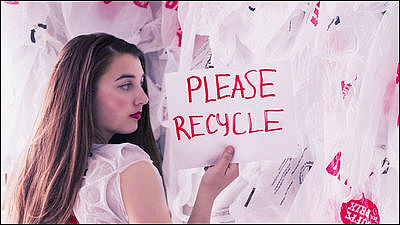What is the actual state of "international business" related to old clothes given by charity?

ByEpSos .de
For those who are disadvantaged, activities are donated worldwide to donate old clothes that have no longer arrived. The collected old clothes were delivered to the necessary people, sold at stores operated by charity organizations and used for funds for operation ...... It was the main purpose, but in fact it is different It is said that there are many cases that trace the unexpected going. What exactly is it?
BBC News - Where do your old clothes go?
http://www.bbc.com/news/magazine-30227025
BBC is making short movies to see what kind of clothing gathered by people donation follows.
Donation of old clothes for charity to be held around the world. It will be mainly used for funds for disadvantaged people, or sold by charity organizations for funds for operation.
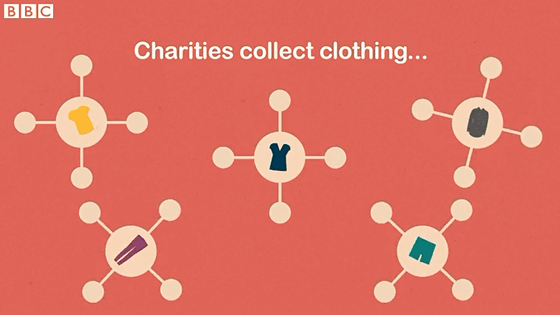
Recovery of old clothes is brought to the charity shop ......

Sometimes it is brought into a clothing collection box (textile bank) for reuse, which is installed on the street corner.
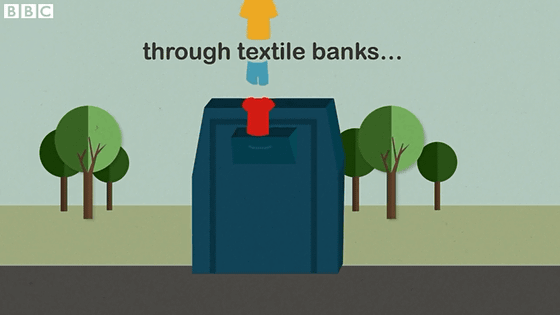
Furthermore, you can go around the house one by one to gather unnecessary clothing. However, it is said that there are cases where gathered old clothes are left without being used because there are no gifts for reasons such as too many numbers

There are professional vendors that collect such old clothes and buy them. The trader pays the price according to the weight and buys the old clothes.

The trader who bought old clothes around here ...
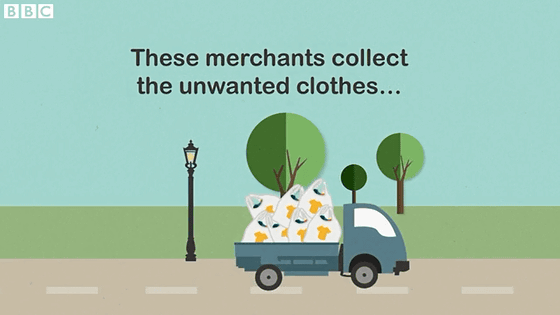
We bring the collected old clothes to the sorting factory.

In the factory sort clothes by kind, design etc.
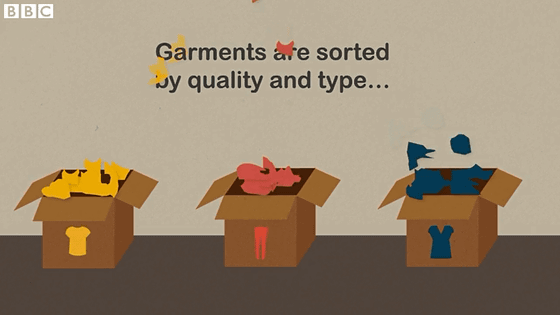
And, for each type, we will bundle it in one bunk. By doing this, the thing which was originally a mountain of old clothes is transformed into a bundle of clothes with commodity value.

Stuff such a bunch in a container for export ... ...
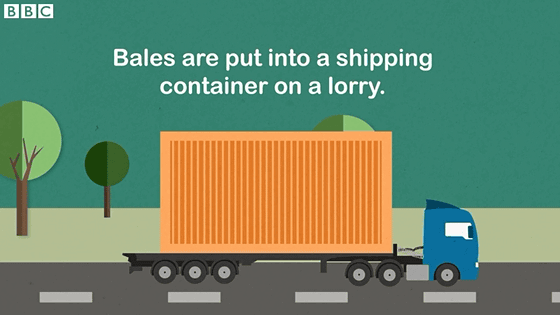
Put it on a container ship and export it overseas. It is the moment that many clothes that were offered for the disadvantaged people of their country are shipped overseas without knowing many people.
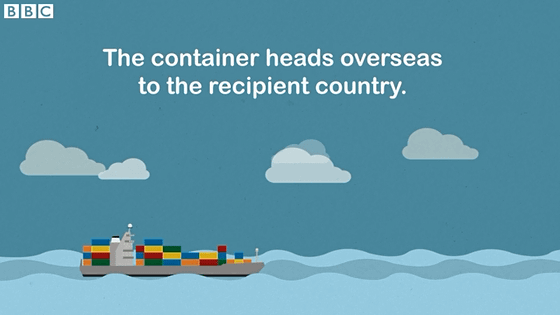
Luggage that arrives at the harbor will be routed and will be brought to the city here and there.
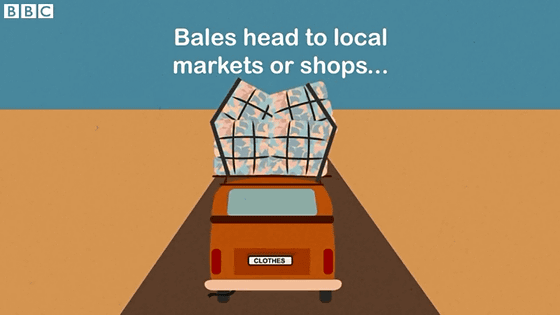
And it will be sold as "goods" in the market, it will be useful under the new owner.

In this way, there are realities that donated old clothes are sold in overseas markets in a form not intended by the donor. Nonetheless, this is not necessarily a bad event, but rather a side that can be said to be a good episode, that unnecessary old clothes that were destroyed and destined to be reclaimed are useful for another person. It can be said that the scale to consider here is on that scale.
A non-profit organization established with the help of British government agencies etc.WRAP(Waste and Resources Action Program: Waste Resources Action Plan)Summary materialsAccording to the PDF file, 50% of unnecessary clothing will be recycled and used under the new owner. Many of them seem to have been provided by donation,Kings College LondonDr. Andrew Brooks of Dr. Andrew Brooks said, "Many believe that the clothing they have offered is sold at the shop in the charity shop," in fact the clothing provided is actually for the benefit of the third party It is pointed out that they are not aware that they are being exported to overseas.

In the UK every year, £ 44 billion (about 7.8 trillion yen) is spent on purchasing clothing, and on average it calculates that it has clothing equivalent to 4000 pounds (1 million yen) per household in the whole country . Among them, 30% is "no fertilizer" without being worn at all and clothes equivalent to 140 million pounds (about 25 billion yen) each year are considered to be disposed of every year.
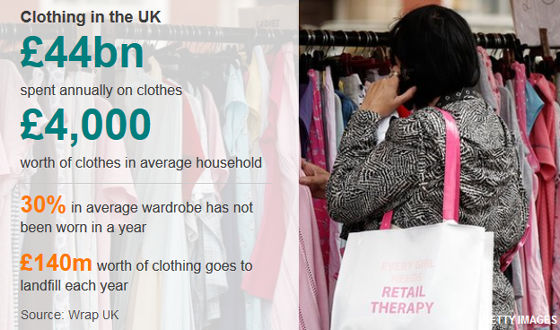
WRAP sees that 70% of the clothing that was recycled was exported and was traded in the "old clothes network" spreading all over the world. The United Nations has taken statistics "UN ComtradeAccording to the database of the United Nations Committee, the largest exporter of clothing in the world is the United States with a total of $ 687 million (about 83.2 billion yen). It is Canada that imports most of the US exported old clothes, then Chile, Guatemala, India etc.

Britain dusts the second largest export volume after the United States, its amount is 612 million dollars (about 74.1 billion yen). Many exports to Poland, Ghana and Pakistan are occupied.
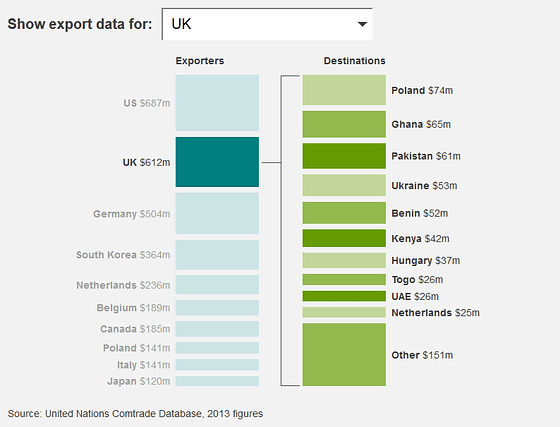
It was Germany that occupied the end of the top three. It exports old clothes to Poland, the Netherlands and Cameroon, totaling $ 544 million (about 61 billion yen).
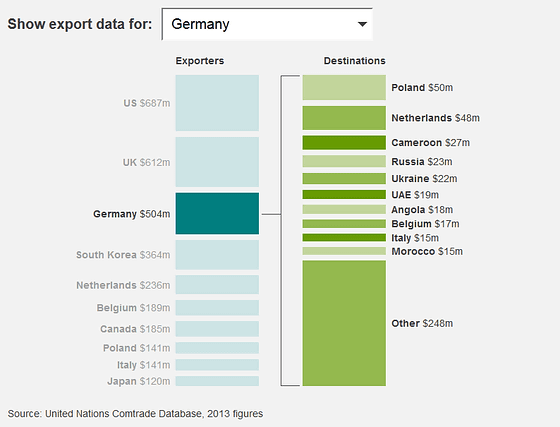
South Korea is ranked in fourth. Exported clothing equivalent to 360 billion dollars (about 44.1 billion yen) to countries in Asia and Africa, including Cambodia, Malaysia, Vietnam.
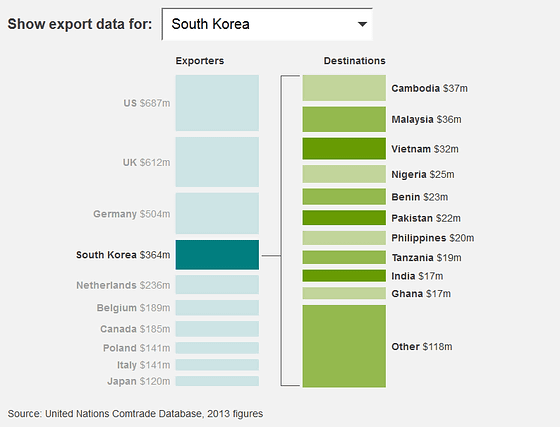
Below, ranking is as follows.
◆ 5th: Netherlands · 236 million dollars (about 28.5 billion yen)
Major export destinations: Russia, Ukraine, Cameroon
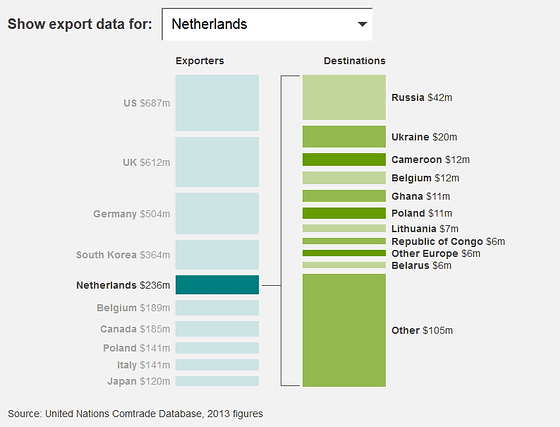
◆ 6th: Belgium · 189 million dollars (about 22.9 billion yen)
Major export destinations: Cameroon, Gabon, Russia
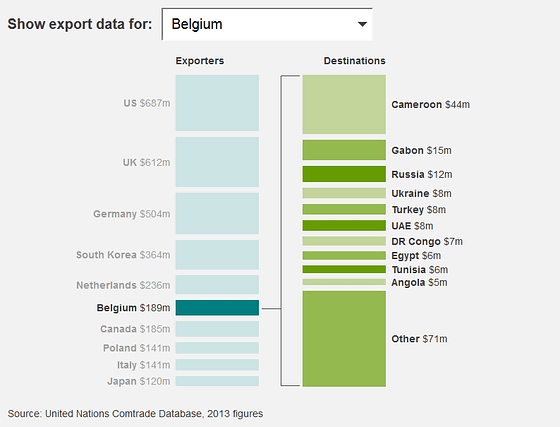
◆ 7th: Canada · 185 million dollars (about 22.4 billion yen)
Major export destinations: Kenya, Angola, Tanzania
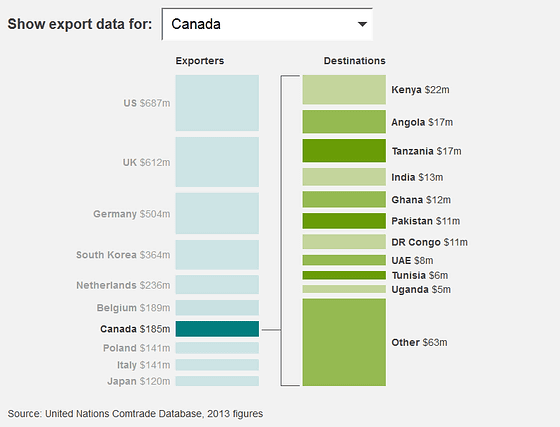
◆ 8th: Poland · 141 million dollars (about 17 billion yen)
Major export destinations: Ukraine, Uganda, Kenya
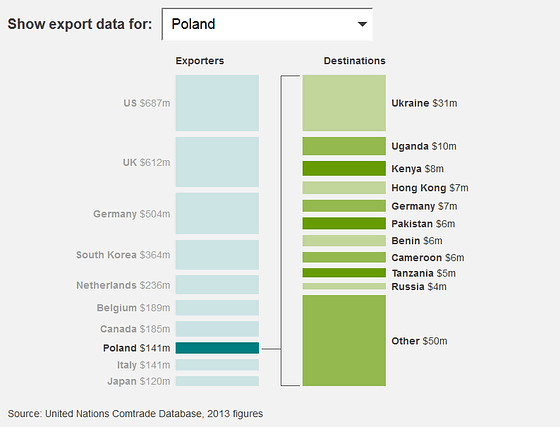
◆ 8th: Italy · 141 million dollars (about 17 billion yen)
Major export destinations: Tunisia, Guinea, Niger

And Japan ranked in the 10th place. The export value is 12 billion dollars (about 14.5 billion yen), the largest export to Malaysia. There were countries such as Korea, the Philippines, Cambodia, Pakistan.
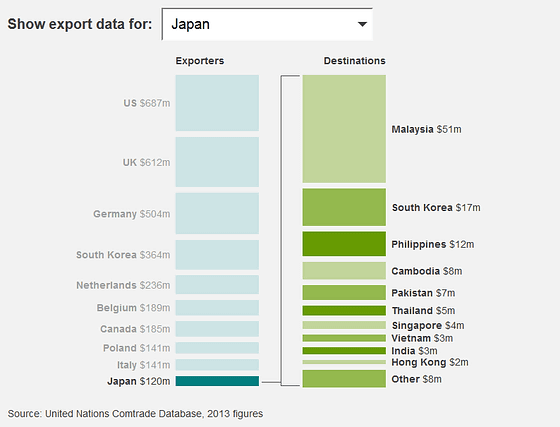
There are many companies that do recycling and exporting clothes like this, but among those, those with large scale are based in LondonLMB Textile Recycling"is. At the company, Ross Barry, who sorts the recovered clothes by hand, packs the items in the same quality, exports them to various countries in Eastern Europe and Africa, said, "They are cheap and in hand You can get easy-to-put clothes, you can buy clothing that is highly fashionable and lasts long. "
LMB Textile Recycling
http://www.lmb.co.uk/

In this way, although it is a mechanism of old clothes recycling which is established as one system, is there no problem at all? The above Dr. Brooks raises questions about this situation. According to Dr., the local textile industry was damaged by the cheap circulation of old clothes gathered for these charity purposes, and the economy was adversely affected. In the 1980s and 1990s, such problems are occurring in many countries such as Kenya, Malawi, Mozambique, Nigeria, Rwanda, Senegal and Swaziland in Africa. Especially the influence in Ghana was remarkable, and employment of the textile industry decreased by 80% between 1975 and 2000.
A bunch of old clothes brought to the market in Uganda. A woman who purchases will rose a bunch.

Wall of old clothes stretched and suspended. The local economy was damaged by the influence of old clothes that came in cheaply in large quantities.
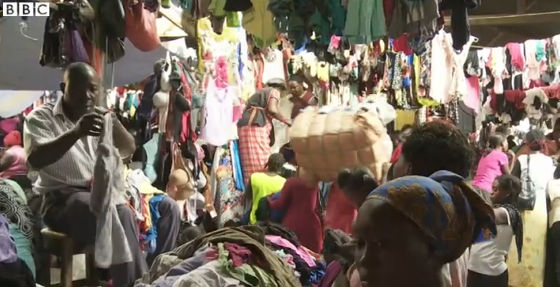
On the other hand, it is also true that there are people who are getting the living by the old clothes business, and the merit and demerit coexist in the current state of international clothing business. We are doing activities to eradicate poverty and injusticeOxfamIan Falkingham, who once belonged to Senegal, now engages in charity activities, says "transparency between clothing companies and charity activities is important."
Oxfam and other organizations are developing independent recycling business in order to avoid reliance on vendors who are doing old clothing business, Mr. Falkingham said, "Extremely effort to get out of the model of old clothes business I am doing it. " Approximately 11,000 tons of garments are donated to Oxfam every year, 3000 tons corresponding to 27% of them are sold at Oxfam stores, 1,000 tons out of the remaining 8,000 tons are disposed of, and 5600 tons are disposed of in Eastern Europe And it is sent to West Africa.
Mr. Falkingham is doing activities with the most emphasis on selling old clothes collected by donation at Oxfam stores. As a result, we can build a connection with the provider, leading to better donation activity, but also on the other hand also tells the importance of converting clothes remaining without selling to money. In Oxfam, in Senegal domesticallyFrip EthiqueWe are launching a social project called "We are promoting efforts to distribute old clothes at a reasonable price.
While Oxfam's activity to create employment in the community and give benefits to the locality, Dr. Brooks appreciates this as a "pragmatic solution" in the short term, but in the presence of a huge old clothing business It is an initiative and shows the idea that people deny the means to rise from poverty.

In this way, it can be said that the world situation is that various ideas are swirling around the old clothes collected by donation. Clothes gathered in good faith are provided to people who are disadvantaged in the form intended by the donor, changed in shape to the funds of the organization's activities, but also bought by another third party and born into business by being exported There is a reality that it is. However, even such a business is one of the affordable means of supplying clothing for countries that are suffering from poverty, and it is a fact that it is a driving force to generate a certain job on the other hand.
Charity activities and donation as good faith are wonderful without any doubt and efforts should be continued, but knowing that such reality lies on the other hand also means the meaning of charity activities It may be said that it is important for deepening.
Related Posts:
in Note, Posted by darkhorse_log

